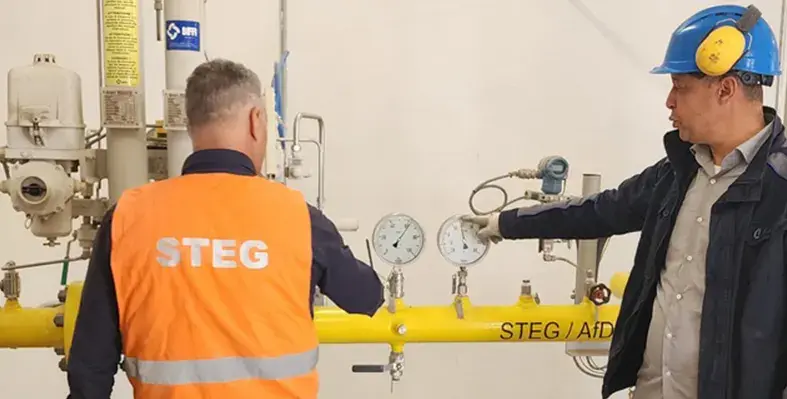In the industrial zones of northwestern Tunisia, a quiet revolution is transforming how businesses operate and communities live
Where heavy fuel oil (HFO) once dominated the energy landscape, natural gas now flows through newly constructed pipelines, bringing cleaner air and economic opportunity to a region that has long waited for such progress.
The contrast is striking when you visit facilities like SICAM, an agri-food company specialising in canned tomatoes, which has switched its plant from HFO to natural gas.
“With gas, we have eliminated pollution, reduced production costs and increased our efficiency. We save up to 500,000 Tunisian dinars per season,” said Kamel Trabelsi, SICAM’s deputy director general.
This transformation was made possible by the Natural Gas Transport and Distribution Network Development Project in Western Tunisia, implemented by state power utility, Société Tunisienne de l'Électricité et du Gaz (STEG), with €49.39mn (US$56.5mn) in financing from the African Development Bank (AfDB).
The STEG project has expanded access to natural gas in historically underserved regions, including Béja Sud and Mjez Elbeb, connecting over 1,250 households to the network so far.
Eventually, the infrastructure will serve 13,500 subscribers across 19 municipalities in Tunisia's northwest, including 2,500 additional connections by the end of this year.
The roll out is already bringing material benefits to local industries, with SICAM connecting to the gas grid in October 2024.
"Thanks to natural gas, our boilers now reach 95% capacity in record time. Efficiency is up, maintenance is easier, and pollution has dropped significantly," added Trabelsi.
According to Mehdi Khoali, AfDB chief operations officer, “one of the project's most transformative outcomes is the gradual industrialisation of the serviced zones. Around 10 new industrial units — including brickyards and cement plants — have been established thanks to the gas supply. Others have expanded their operations. This is helping create jobs and strengthen regional economic resilience."
Mohamed Riadh Hellal, lead department head at STEG, and the project's coordinator, said the initiative “not only heats homes, but also boosts local economic activity.”
Read more:
Clarke Energy power plant underpins SA industrial output
Wartsila powers new 30MW Lagos gas plant
Global energy demand surged in 2024, says IEA
AMEA breaks ground on another African solar project






